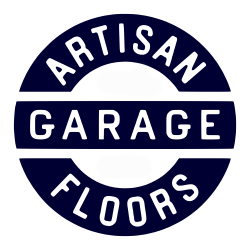Surface Preparation

An industry study shows that over 70% of coatings fail due to inadequate or improper surface preparation. With DIY applications, if any surface preparation is done at all, it is usually not adequate. The most common DIY methods are pressure-washing, Citric Acid wash, Diamabrush, and Muriatic Acid wash. Pressure washing is not enough and Citric Acid is not strong enough. A Diamabrush may do a decent job, depending on the concrete, and the person using it. Muriatic Acid does a good job of etching and cleaning concrete, but it won’t react properly if the concrete has been sealed. Acid-washing also changes the pH of the concrete. It must be properly neutralized or it will continue to attack the concrete, breaking down the surface where coating needs to bond. The altered pH may also attack the coating.
A professional will either Diamond Grinding or Shotblast to prepare the concrete. Both of these methods mechanically etch the surface removing foreign materials and contamination. They also give the concrete a textured profile, increasing the surface area of the floor, and allowing the coating to get an excellent bond.
Materials
The solids-content on DIY products also tends to be very low. The solids content is the proportion of volatile material that is in the material. Usually DIY epoxies have a solids content between 40% and 70%, give or take. The material we use is 100% solids, it is in it’s pure form. This allows for a higher build, more body, and a stronger floor coating. Epoxies are not inherently UV-tolerant, and many DIY epoxies tend to stain easily. We use a material called polyaspartic urethane for the topcoat – it is UV-tolerant, and significantly more resistant to impact, abrasion, chemicals, and staining.
Decorative Flake
A DIY kit typically contains a small packet of flake, maybe a pound or two.We will broadcast 10-15 pounds of decorative flake for the “Basic”, and about 45-55 pounds of flake for the “Classic”. In the Classic, it will thicken the 10-mil basecoat to around 60-mils.
Repairs
Cracks and damage should be repaired before the coating is applied or they will be visible through the coating. This needs to be done with a material that will bond permanently with the concrete. The repairs should be sanded so that they are not visible. A good garage floor contractor will spend ample time doing repairs and detail work, improving the final appearance of the floor. We spend about 60%-70% of the time we’re on a job, doing surface preparation, repairs, and detail work.
Life of the Floor
The last problem with an inexpensive coating, is that it WILL fail, stain, discolor and/or wear out prematurely. When it’s time to replace it, the existing coating will have to be removed before the new one can be installed. This will increase the cost of the new coating.
The bottom line is, by the time you add up all of the equipment and materials that you would need to be comparable to a professionally-installed coating, it will likely cost you more than having it professionally done, assuming you find a contractor that offers fair prices. And you still won’t have the same quality of surface preparation or materials.
